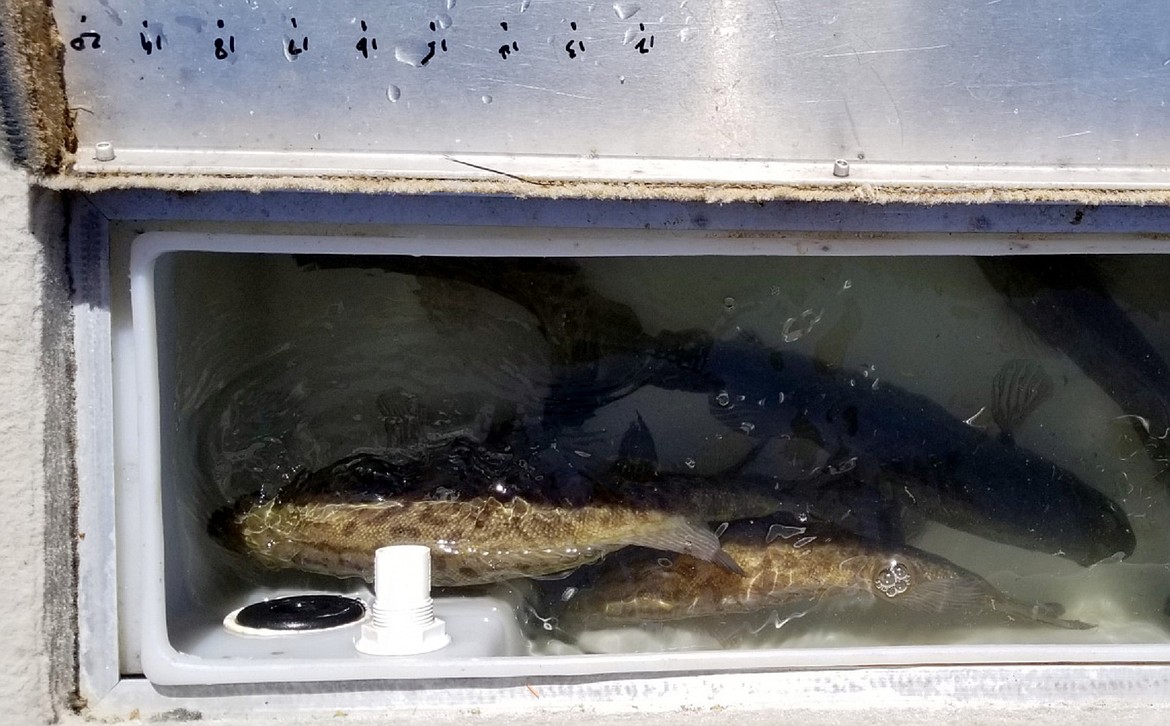Of live wells, bucket biologists & Johnny Appleseed fish
They are called Johnny Appleseed fish by the people whose job it is to prevent them from taking root.
They are bullhead and yellow perch, northern pike and rainbow trout and although each species is native to a lake or pond somewhere, they didn’t find their new haunts naturally.
“A lot of the fish we have in the Panhandle were illegally introduced,” said Mark Rhodes, an Idaho Fish and Game conservation officer in Coeur d’Alene.
Walleye, northern pike, bass, and some species of trout are on the list.
The fish are technically considered invasive, often planted into the state’s rivers, lakes and streams by anglers with good intentions.
There’s a problem: It’s a felony to transport live fish from one water body to another.
Recently, yellow perch have turned up in Winchester Lake in the Clearwater Region and according to reports, Mann Lake near Lewiston may have a new and illegally-planted crop of perch too.
“We do not want perch in Mann Lake,” Conservation Officer Rick Cooper of Lewiston said.
Although the moniker, “Johnny Appleseed” conjures images of fruitful goodness, illegally adding another predator to a water body managed for other species is counter productive.
Cooper ventures that the latest findings were planted by anglers who like to eat perch, but don’t want to travel to places farther away, such as Cascade Lake where perch are abundant. Instead, a bunch of the yellow spiny rays were likely caught in Cascade, kept in a live well and replanted closer to an angler’s home.
Under Idaho code, the transplanting of the perch is a potential felony which can lead to a lifetime loss of hunting and fishing privileges, a $50,000 fine and up to five years behind bars.
“We would probably not charge it like that,” Rhodes said.
Rhodes thinks most people who transplant fish — often called bucket biologists — do it naively, or without malice. Often Fish and Game find people who are allowed to manage backyard stock ponds misusing the permits issued by Fish and Game.
People transporting fish in their boats’ live wells are given the benefit of the doubt.
“Most of the time it’s innocent,” Rhodes said. “People forget to drain their live wells, or take the fish out of them.”
Regardless, transporting live fish in the cool and aerated wells of their trailered boats on state roads from one lake to another is a no-no.
“You shouldn’t be transporting live fish away from any water body in which they were caught,” Rhodes said.
Exceptions are made for fishing tournaments in which anglers travel by boat from one waterway to another.
Cooper remembers once talking with kids who had scooped a bunch of juvenile catfish from the shallows of a lake, kept them in a cooler and planned to innocently transplant them into another water body.
“It was the Johnny Appleseed kind of thing,” he said.
People need to recognize that they have to kill the fish they catch and put them on ice, or transport dead fish, Rhodes said.
“What they can’t do is load their boat onto a trailer with a bunch of live fish,” he said.
Draining live wells also reduces the risk of spreading invasive species including milfoil, mud snails, zebra mussels or unseen diseases.
Anglers who plan to keep fish for eating, should realize the quicker the fish are dispatched and stored on ice, the better they taste on a plate, according to Fish and Game.

